
Green County is a county located in the U.S. state of Kentucky. Its county seat is Greensburg. Green was a prohibition or dry county until 2015.

Danville is a home rule-class city in Boyle County, Kentucky, United States. It is the seat of its county. The population was 17,236 at the 2020 Census. Danville is the principal city of the Danville Micropolitan Statistical Area, which includes all of the Boyle and Lincoln counties. In 2001, Danville received a Great American Main Street Award from the National Trust for Historic Preservation. In 2011, Money magazine placed Danville as the fourth-best place to retire in the United States. Centre College in Danville was selected to host U.S. vice-presidential debates in 2000 and 2012.
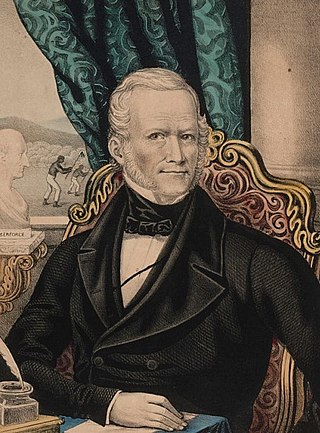
James Gillespie Birney was an American abolitionist, politician, and attorney born in Danville, Kentucky. He changed from being a planter and slave owner to abolitionism, publishing the abolitionist weekly The Philanthropist. He twice served as the presidential nominee for the anti-slavery Liberty Party.
Oophorectomy, historically also called ovariotomy is the surgical removal of an ovary or ovaries. The surgery is also called ovariectomy, but this term is mostly used in reference to animals, e.g. the surgical removal of ovaries from laboratory animals. Removal of the ovaries of females is the biological equivalent of castration of males; the term castration is only occasionally used in the medical literature to refer to oophorectomy of women. In veterinary medicine, the removal of ovaries and uterus is called ovariohysterectomy (spaying) and is a form of sterilization.
The year 1809 in science and technology involved some significant events, listed below.
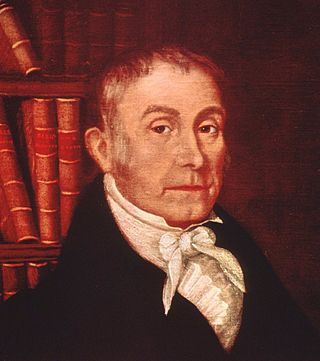
Ephraim McDowell was an American physician and pioneer surgeon. The first person to successfully remove an ovarian tumor, he has been called "the father of ovariotomy" as well as founding father of abdominal surgery.

Lawson Tait, born Robert Lawson Tait was a pioneer in pelvic and abdominal surgery and developed new techniques and procedures. He emphasized asepsis and introduced and advocated for surgical techniques that significantly reduced mortality. He is well known for introducing salpingectomy in 1883 as the treatment for ectopic pregnancy, a procedure that has saved countless lives since then. Tait and J. Marion Sims are considered the fathers of gynecology.

Saint Mary's Hospital is a hospital in Manchester, England. It is part of Manchester University NHS Foundation Trust. Founded in 1790, St Mary's provides a range of inter-related services specifically for women and children.

The Zachary Taylor House, also known as Springfield, was the boyhood home of the twelfth President of the United States, Zachary Taylor. Located in what is now a residential area of Louisville, Kentucky, Taylor lived there from 1795 to 1808, held his marriage there in 1810, and returned there periodically the rest of his life.

Samuel David Gross was an American academic trauma surgeon. Surgeon biographer Isaac Minis Hays called Gross "The Nestor of American Surgery." He is immortalized in Thomas Eakins' The Gross Clinic (1875), a prominent American painting of the nineteenth century. A bronze statue of him was cast by Alexander Stirling Calder and erected on the National Mall, but moved in 1970 to Thomas Jefferson University in Philadelphia.
Thomas Howell Crawford was the thirteenth Mayor of Louisville, Kentucky from April 2, 1859, to April 4, 1861.
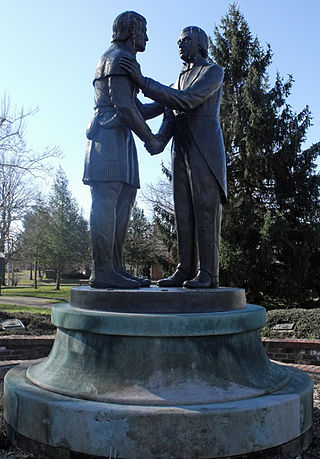
Constitution Square Historic Site is a 3-acre (0.012 km2) park and open-air museum in Danville, Kentucky. From 1937 to 2012, it was a part of the Kentucky state park system and operated by the Kentucky Department of Parks. When dedicated in 1942, it was known as John G. Weisiger Memorial State Park, honoring the brother of Emma Weisiger, who donated the land for the park. Later, it was known as Constitution Square State Shrine and then Constitution Square State Historic Site. On March 6, 2012, the Department of Parks ceded control of the site to the county government of Boyle County, Kentucky, and its name was then changed to Constitution Square Historic Site.
Ephraim McDowell Regional Medical Center (EMRMC) is a locally controlled not-for-profit 222-bed hospital located in Danville, Kentucky.
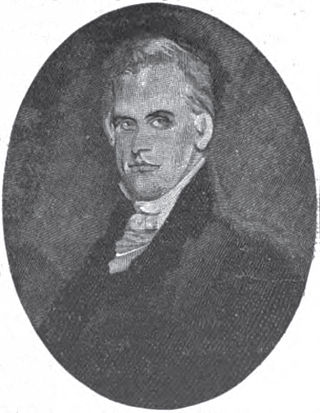
Samuel McDowell was a soldier in three wars and political leader in Virginia and Kentucky. He served under George Washington in the French and Indian War, as an aide-de-camp to Isaac Shelby in Lord Dunmore's War, and under Nathanael Greene during the Revolutionary War. He then relocated to Kentucky and became a surveyor. Later, he was appointed one of the first district court judges in what would become the state of Kentucky. He became a leader of the movement to separate Kentucky from Virginia, and presided over nine of the state's ten constitutional conventions. He was the father of Dr. Ephraim McDowell.
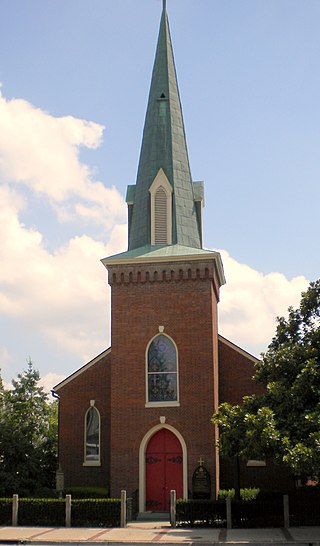
Trinity Episcopal Church in Danville, Kentucky was one of the first churches organized in the Episcopal Diocese of Kentucky. Trinity Church is the oldest in-use church structure in Danville and the oldest continuously used Episcopal church building in the Episcopal Diocese of Lexington as well as the second oldest in Kentucky. It is listed in the National Register of Historic Places.

Thomas Keith FRCSEd was a Victorian surgeon and amateur photographer from Scotland. He developed and improved the wax paper process and his photographs are recognised for their composition and use of shade. He was an early practitioner of the operation of ovariotomy where his published results were amongst the best in the world.
Irvine-McDowell Park is a 20-acre city park located in Richmond, Kentucky. The park includes a playground, picnic shelter, tennis courts, an outdoor basketball court and four softball and baseball fields. Earle Combs Field used to be located there. Located at 345 Lancaster Avenue in Richmond, the park occupies the grounds of Irvinton House. The two-story Federal brick residence was built in the 1820s for Dr. Anthony Wayne Rollins. It was purchased in 1829 by David Irvine (1796–1872). Irvine gave the property to his daughter, Elizabeth Shelby Irvine, after her marriage to her cousin William McClanahan Irvine in 1849.
The Lauder Greenway family is a Scottish-American family whose influence on, and involvement in, American political and economic affairs dates from the 1640s through the contemporary era. Their primary contributions have been in the sciences, government, and intelligence. The most notable members are George Lauder and his "cousin-brother" Andrew Carnegie. They co-created the Carnegie Steel Corporation, the forerunner to U.S. Steel, and subsequently became two of the richest men in the world.
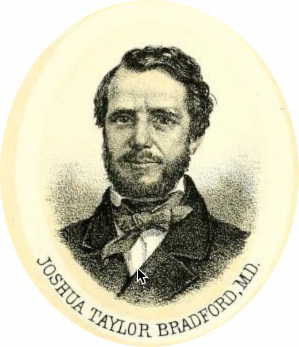
Joshua Taylor Bradford was an American surgeon and a pioneer of ovariotomy. At a time when ovariotomies were associated with great risk, he improved the success rates through asepsis and careful ligation of the pedicles, the ovarian branches of the uterine artery.

David Hervey Maxwell was an American physician and Whig legislator. He is known as the "Father of Indiana University" because of his successful efforts in lobbying to have the State Seminary located in Bloomington. Throughout his life he served on the Indiana University Board of Trustees and various political offices.
















